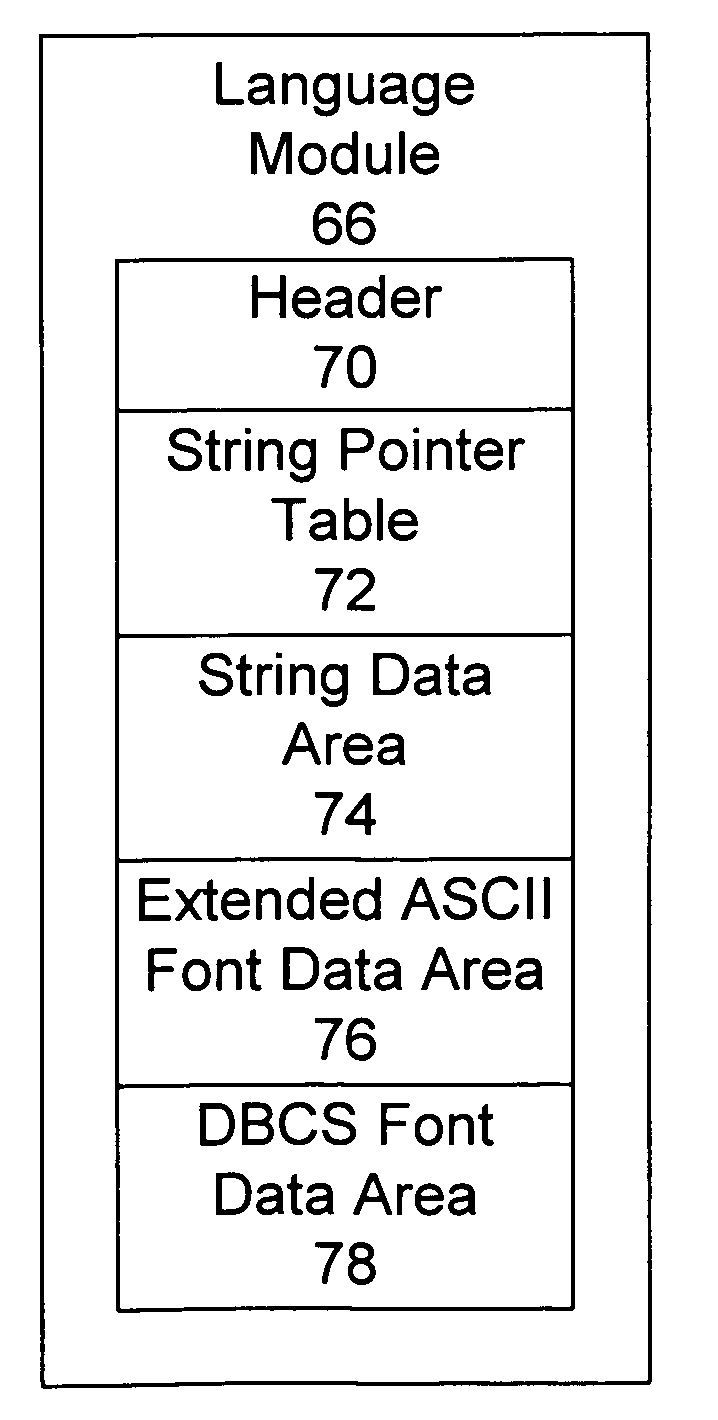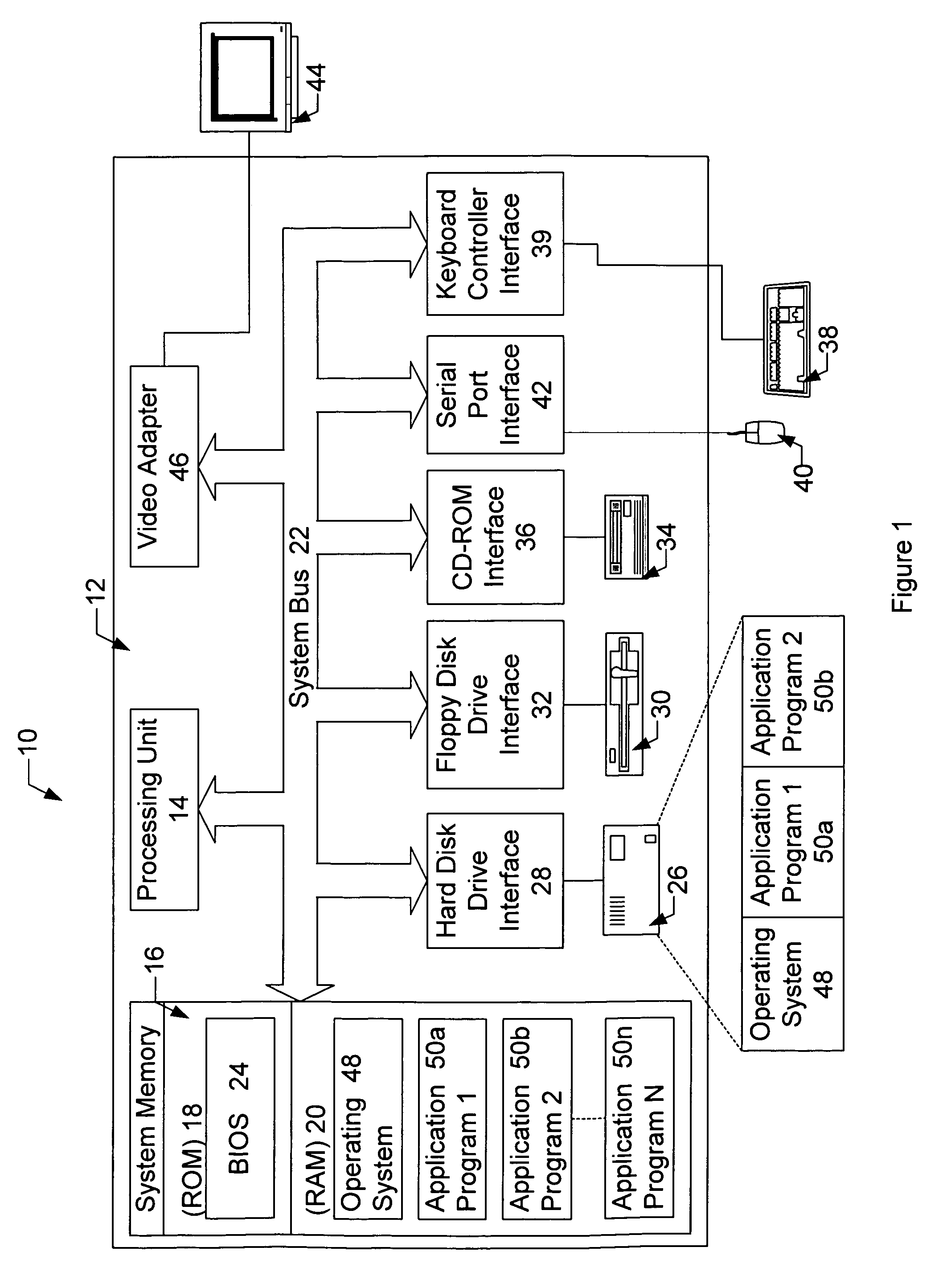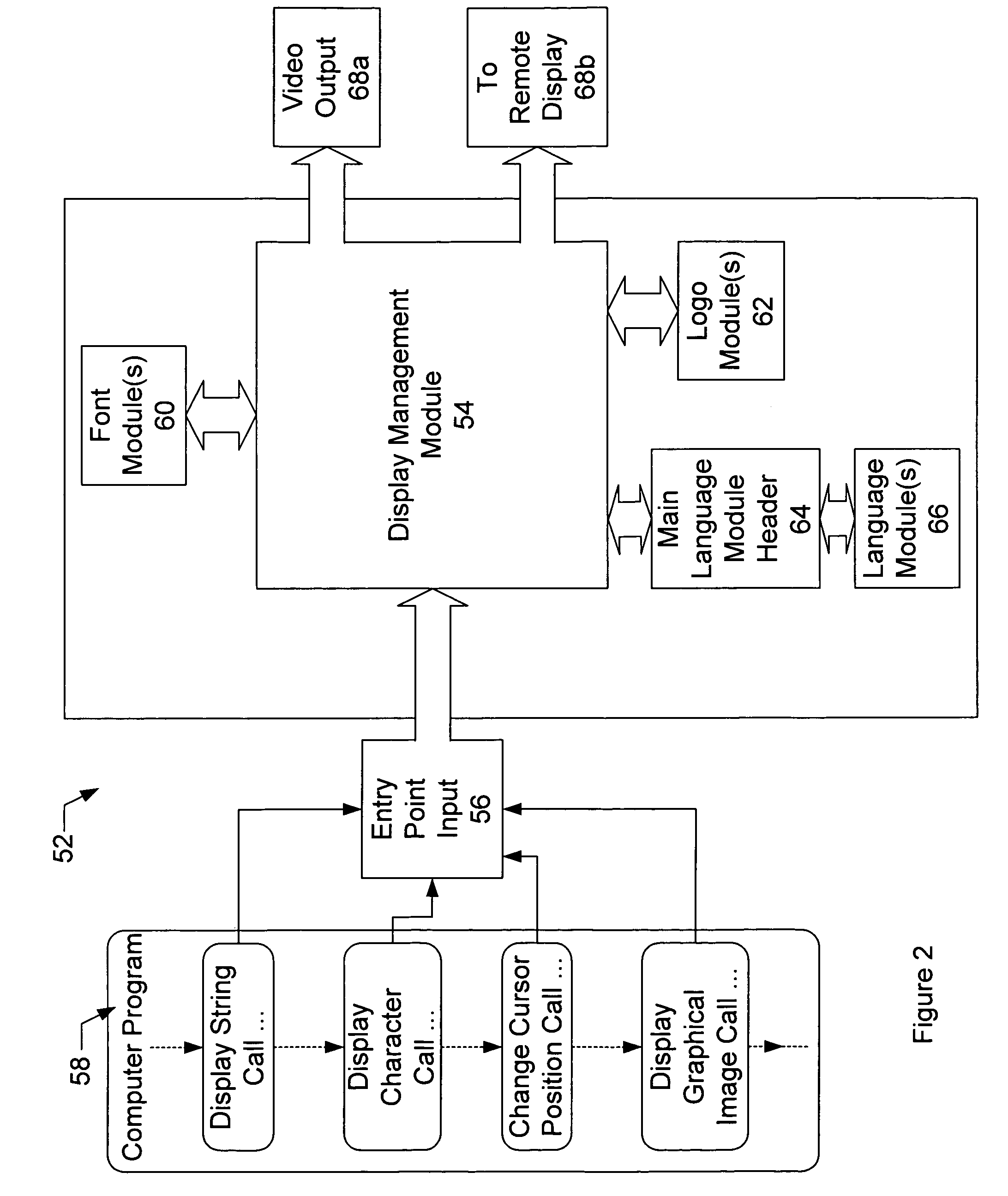Data structure, methods, and computer program products for storing text data strings used to display text information on a display terminal
a technology of text data and display terminals, applied in the direction of electric digital data processing, instruments, computing, etc., can solve the problems of increasing the overall size of the code, affecting the display of text and graphics by the computer program, and affecting the display of text and graphics. , to achieve the effect of reducing the amount of data transmitted
- Summary
- Abstract
- Description
- Claims
- Application Information
AI Technical Summary
Benefits of technology
Problems solved by technology
Method used
Image
Examples
Embodiment Construction
[0050]The present invention now will be described more fully hereinafter with reference to the accompanying drawings, in which preferred embodiments of the invention are shown. This invention may, however, be embodied in many different forms and should not be construed as limited to the embodiments set forth herein; rather, these embodiments are provided so that this disclosure will be thorough and complete, and will fully convey the scope of the invention to those skilled in the art. Like numbers refer to like elements throughout.
[0051]As discussed above and provided in more detail below, the present invention provides systems, methods, and computer program products for managing the display of information provided by a computer program on a display terminal. Importantly, the present invention provides a display management module that operates as an intermediate module between the computer program and the display terminal. The display management module interprets display commands fr...
PUM
 Login to View More
Login to View More Abstract
Description
Claims
Application Information
 Login to View More
Login to View More - R&D
- Intellectual Property
- Life Sciences
- Materials
- Tech Scout
- Unparalleled Data Quality
- Higher Quality Content
- 60% Fewer Hallucinations
Browse by: Latest US Patents, China's latest patents, Technical Efficacy Thesaurus, Application Domain, Technology Topic, Popular Technical Reports.
© 2025 PatSnap. All rights reserved.Legal|Privacy policy|Modern Slavery Act Transparency Statement|Sitemap|About US| Contact US: help@patsnap.com



